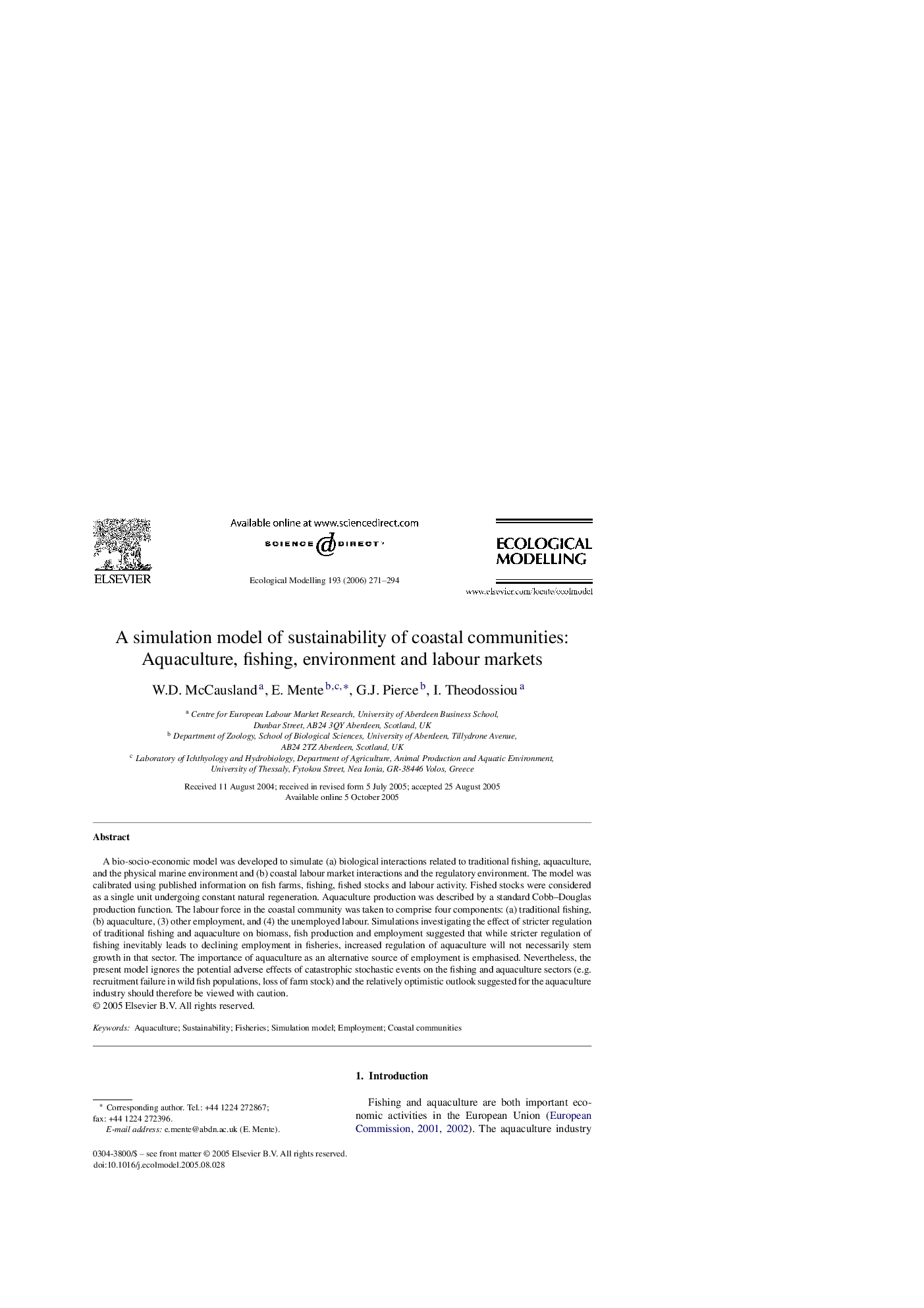| Article ID | Journal | Published Year | Pages | File Type |
|---|---|---|---|---|
| 4379241 | Ecological Modelling | 2006 | 24 Pages |
Abstract
A bio-socio-economic model was developed to simulate (a) biological interactions related to traditional fishing, aquaculture, and the physical marine environment and (b) coastal labour market interactions and the regulatory environment. The model was calibrated using published information on fish farms, fishing, fished stocks and labour activity. Fished stocks were considered as a single unit undergoing constant natural regeneration. Aquaculture production was described by a standard Cobb-Douglas production function. The labour force in the coastal community was taken to comprise four components: (a) traditional fishing, (b) aquaculture, (3) other employment, and (4) the unemployed labour. Simulations investigating the effect of stricter regulation of traditional fishing and aquaculture on biomass, fish production and employment suggested that while stricter regulation of fishing inevitably leads to declining employment in fisheries, increased regulation of aquaculture will not necessarily stem growth in that sector. The importance of aquaculture as an alternative source of employment is emphasised. Nevertheless, the present model ignores the potential adverse effects of catastrophic stochastic events on the fishing and aquaculture sectors (e.g. recruitment failure in wild fish populations, loss of farm stock) and the relatively optimistic outlook suggested for the aquaculture industry should therefore be viewed with caution.
Related Topics
Life Sciences
Agricultural and Biological Sciences
Ecology, Evolution, Behavior and Systematics
Authors
W.D. McCausland, E. Mente, G.J. Pierce, I. Theodossiou,
